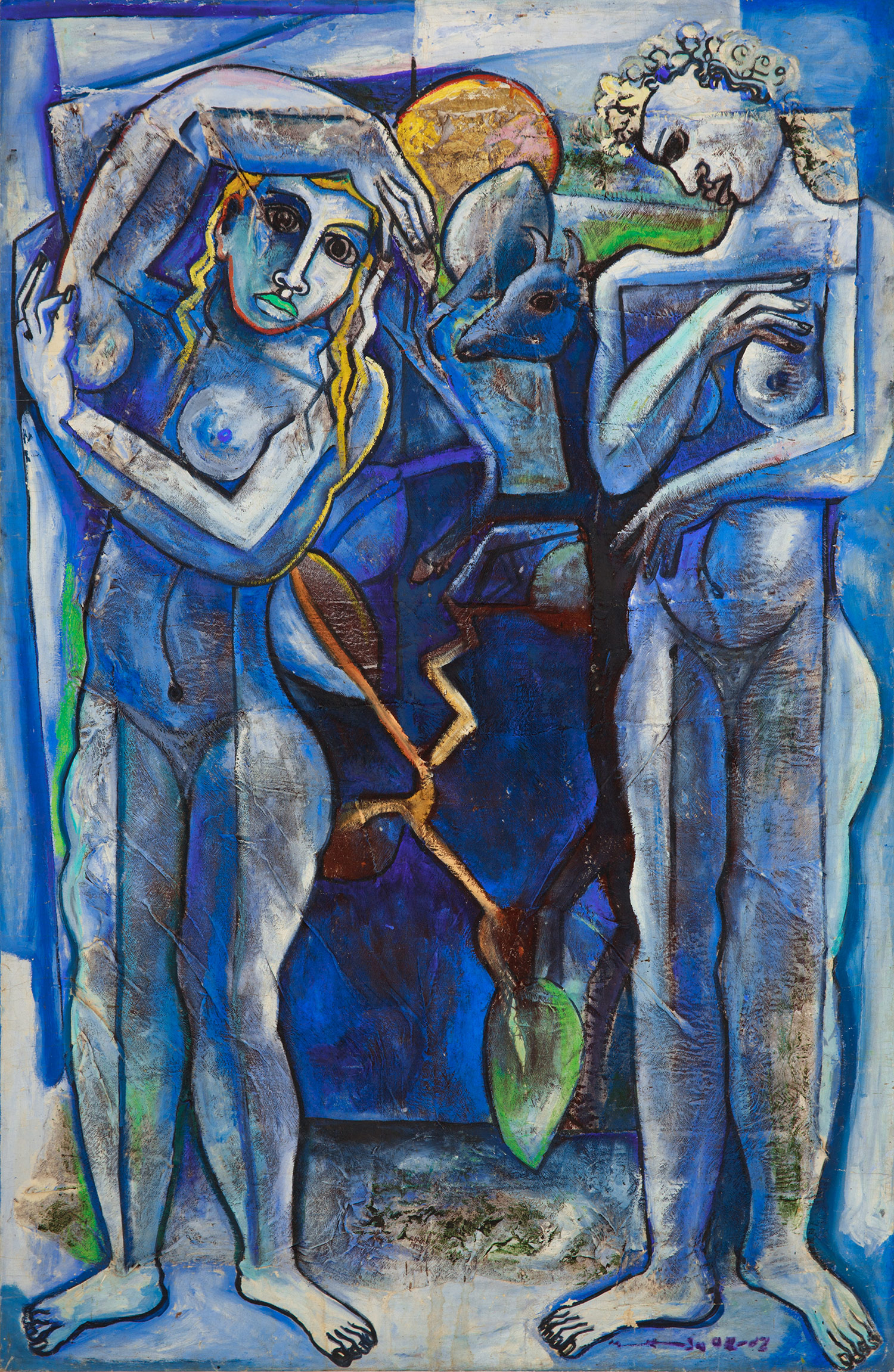Geoffrey Mukasa (Ugandan, 1954 – 2009)
Untitled, 2002 – 2003
Signed ‘signature 02 – 03’ (lower right)
Oil and bark cloth on canvas
174 x 113.2 cm
Ksh 1,700,000 – 2,260,000
(US$) 15,000 – 20,000
Provenance: acquired from the artist’s estate via AKA Gallery
Sold Ksh 2,582,800
Geoffrey Mukasa is widely recognized as one of East Africa’s most influential painters. Born in 1954 to a medical doctor and the daughter of a Chief, Mukasa spent part of his childhood in the King’s palace in Buganda. Following the coup of Idi Amin, Mukasa left Uganda to study fine art at the Lucknow College of Art and Crafts in India. This period for Mukasa was one of much formal experimentation shaped by his research into both Indian and European art movements. When Mukasa returned to Uganda he had developed a distinctive style of painting, frequently focusing on relationships and interactions between humans and with their environment.
During the early 1990s Mukasa became a key figure in the movement to revive cultural life in Kampala. This movement was seen as a unifying force and an inspiration for the nation’s recovery after years of military dictatorship.
In his early years as an artist, Mukasa had largely worked in collage because of the difficulty in accessing classic art materials in Kampala at the time. It was only later, and to great success, that he began to paint on canvas.
The depth of influence of Indian art on Mukasa was reiterated by his inclusion in an exhibition of Indian Modern Art at Villa Vassilieff Gallery, Paris, 2017. In 2016, Mukasa’s work was shown in a solo presentation at Art Dubai Modern. His work is held in collections in America, Europe and Africa, and appears frequently at international auctions, including Sotheby’s and Bonhams.
Publications include Mukasa Geoffrey – the Artist’s Life in Uganda, AKA Gallery Kampala published by Maria Fischer, Rose Kirumira, Paul Lubowa and Josephine Mukasa, 2011.


